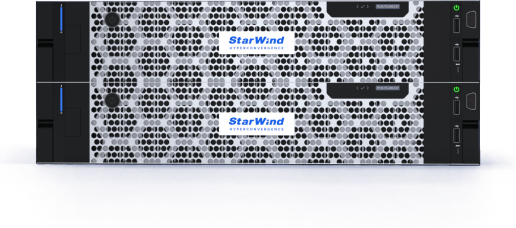As a system administrator, you’re always looking for ways to optimize your infrastructure. You might be considering running a Hyper-V host as a domain controller (DC) to save resources or simplify management. However, this seemingly efficient approach can introduce significant problems. In this article, we’ll explore why combining these roles is generally a bad idea, covering security risks, performance impacts, licensing issues, and more. We’ll also discuss best practices for deploying domain controllers in a virtualized environment so you can make the best decision for your organization.
Compromised security
Security should always be a top priority when designing your network infrastructure. Running your Hyper-V host as a domain controller introduces several security risks that you need to consider. If the Hyper-V host is compromised, the entire domain could be at risk.
Compromise concerns
Think about it: if an attacker gains control of the Hyper-V host, they essentially have the keys to your entire domain. This is because the host has direct access to the domain controller’s resources and credentials. If you keep the roles separate, compromising the Hyper-V host doesn’t automatically give an attacker domain admin privileges. This separation of duties provides a critical layer of defense. By isolating the domain controller, you limit the potential damage from a compromised host.
Twice the risk
When you combine roles, you’re essentially doubling the attack surface. The Hyper-V host has its own set of vulnerabilities, and the domain controller has another. By running them on the same machine, you’re exposing your domain to both sets of risks. Separating the roles means that even if one system is compromised, the other remains protected. This reduces the likelihood of a successful attack and limits the potential damage.
Best practices
To mitigate these risks, it’s generally recommended to keep your Hyper-V hosts and domain controllers separate. You can create virtual domain controllers running on separate, hardened Hyper-V hosts. This approach provides a more secure and resilient environment. Ensure your domain controllers are properly configured with strong passwords, multi-factor authentication, and regular security updates. Also, consider implementing additional security measures such as intrusion detection systems and security information and event management (SIEM) tools to monitor your environment for suspicious activity. We will review multiple DCs in the appropriate section.
Performance impacts
Running a Hyper-V host as a domain controller can affect the performance of both the host and the virtual machines (VMs) running on it. The domain controller role requires significant resources, and sharing these resources with the Hyper-V host can lead to performance bottlenecks.
Resource contention
The domain controller is a critical component of your network infrastructure. It handles authentication, authorization, and other essential services. These services require CPU, memory, and disk I/O resources. When you run the domain controller on the Hyper-V host, these resources are shared with the host operating system and any other VMs. This can lead to resource contention, where the domain controller and other VMs compete for the same resources. As a result, the performance of the domain controller and other VMs may suffer. Users may experience slow login times, application performance issues, and other problems.
Increased overhead
The Hyper-V host also requires resources to manage the virtualization environment. This includes managing VMs, allocating resources, and handling network traffic. Running the domain controller on the same machine increases the overall overhead, which can further impact performance. The Hyper-V host may struggle to keep up with the demands of both the virtualization environment and the domain controller role. This can lead to sluggish performance and a poor user experience.
Maintenance nightmare
When you encounter issues with your infrastructure, you need to be able to rely on vendor support. Running your Hyper-V host as a domain controller can complicate this process because it’s not a recommended configuration. Microsoft and other vendors may be hesitant to provide support for issues arising from this setup.
Microsoft’s best practices generally advise against combining the Hyper-V host and domain controller roles. This means that if you run into problems, you may not find much official documentation or support to help you troubleshoot. When you deviate from recommended configurations, you’re essentially on your own. This can be a significant challenge if you encounter a critical issue that requires expert assistance. You might spend a lot of time searching forums and knowledge bases, but there’s no guarantee you’ll find a solution.
Community hesitation
Even online communities may be wary of providing support for this setup. Experienced system administrators know the risks and drawbacks of combining these roles. They may be reluctant to help you troubleshoot issues that could have been avoided by following best practices. You might encounter responses suggesting you reconfigure your environment to separate the roles, rather than providing direct assistance with your current setup. This can be frustrating when you’re facing a problem and need immediate help.
Data protection concerns
Backing up and restoring a domain controller is a critical task for any system administrator. When you combine the Hyper-V host and domain controller roles, the backup and recovery process becomes more complicated.
Single Point of Failure (SPOF)
If the Hyper-V host fails, both the host and the domain controller will be unavailable. This can lead to significant downtime and disruption of services. It’s important to have a robust backup and recovery plan in place to minimize the impact of such a failure. However, backing up and restoring a combined Hyper-V host and domain controller can be challenging. You need to ensure that the backup captures both the host operating system and the domain controller’s Active Directory database. The restore process also needs to be carefully planned to avoid corruption or inconsistencies.
Increased complexity
The backup and recovery process becomes more complex when you combine roles. You need to consider the dependencies between the Hyper-V host and the domain controller. For example, if you restore the domain controller to an earlier point in time, it may be incompatible with the current configuration of the Hyper-V host. This can lead to errors and require additional troubleshooting. You also need to ensure that the backup and recovery process is properly tested to verify that it works as expected. This requires simulating a failure and restoring the system from backup. The increased complexity can make it more difficult to ensure that the backup and recovery process is reliable.
Multiple DCs
To mitigate these risks, it’s recommended to have at least two domain controllers in your environment. This provides redundancy and ensures that the domain remains available even if one domain controller fails. You can create virtual domain controllers running on separate Hyper-V hosts. This approach provides a more resilient and reliable environment. If one Hyper-V host fails, the other domain controller can continue to provide authentication and authorization services. This minimizes downtime and ensures that users can continue to access resources. You can also use Active Directory replication to keep the domain controllers synchronized. This ensures that changes made on one domain controller are automatically replicated to the other domain controllers. This provides a consistent and up-to-date view of the domain.
Hardware lock-in
One of the benefits of virtualization is the ability to easily move VMs between hosts. This provides flexibility and allows you to quickly respond to changing resource demands. However, when you run the domain controller on the Hyper-V host, this portability is lost.
Tied to the hardware
The domain controller becomes tied to the physical hardware of the Hyper-V host. You can’t easily move the domain controller to another host without potentially disrupting services. This can be a significant limitation if you need to perform maintenance on the Hyper-V host or if you want to migrate the domain controller to a newer server. The lack of portability can also make it more difficult to respond to unexpected hardware failures. If the Hyper-V host fails, you may need to rebuild the domain controller from scratch, which can be a time-consuming and complex process.
Reduced flexibility
With such setup you can’t easily move VMs between hosts to balance resource utilization. This can lead to performance bottlenecks and inefficient use of resources. You may also be limited in your ability to take advantage of new hardware or virtualization features. For example, you may not be able to migrate the domain controller to a newer version of Hyper-V without significant downtime. The reduced flexibility can make it more difficult to adapt to changing business needs.
Alternative 1: Virtualizing Domain Controllers
Virtualizing domain controllers offers several advantages, including easier backup and recovery, simplified hardware management, and reduced physical footprint. However, it also presents challenges. Ensure that each virtualized DC resides on a separate physical host where possible to avoid a single point of failure. Implement proper time synchronization to prevent replication issues. Dedicate sufficient resources to each virtual DC to maintain performance. Avoid using snapshots for DC backups, as they can lead to USN rollback issues. Instead, use proper backup and restore procedures.
Alternative 2: Azure Active Directory (Azure AD)
For organizations increasingly leveraging cloud services, Azure AD offers an alternative to traditional on-premises Active Directory Domain Services. Azure AD provides identity and access management capabilities as a service, eliminating the need to manage domain controllers in some scenarios. While it’s not a direct replacement for traditional AD DS (as it doesn’t support Group Policy in the same way), Azure AD can be integrated with on-premises AD or used independently for cloud-native environments. Azure AD Domain Services provides managed domain services in Azure, allowing you to migrate legacy applications to the cloud that require traditional domain features. Consider Azure AD or Azure AD Domain Services if you’re moving towards a cloud-first strategy.
Conclusion
Running a Hyper-V host as a domain controller might seem like a convenient way to save resources, but it introduces significant risks and drawbacks. From increased security vulnerabilities and lack of vendor support to performance impacts and complicated backup procedures, the disadvantages generally outweigh any perceived benefits. By understanding these challenges, you can make informed decisions about your infrastructure design and ensure a secure, reliable, and well-supported environment.
Keeping domain controllers separate from the Hyper-V host is a general good practise for a secure and manageable infrastructure, and by understanding the reasons why, you’re well-equipped to make the right choices for your organization.


